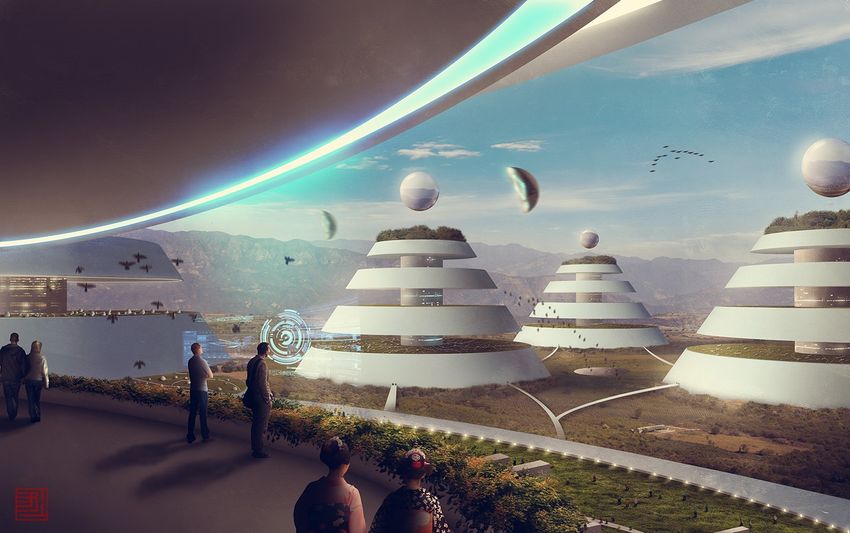With space agencies like NASA and private companies like SpaceX planning manned missions to Mars, the idea of Martian cities is becoming more than just science fiction. But how realistic is it to build permanent human settlements on the Red Planet? Let’s explore the challenges and potential solutions for extraterrestrial construction! 🌍➡️🪐
1. Why Build Cities on Mars? 🚀🌍
Establishing a human presence on Mars could:
✅ Ensure Humanity’s Survival – A backup planet for human civilization 🌎➡️🪐
✅ Advance Science & Exploration – Unlock secrets about Mars’ past 🔬
✅ Boost Space Economy – Mining and resource extraction could be profitable 💰
✅ Inspire Future Generations – A stepping stone to interplanetary colonization 🚀
Billionaires like Elon Musk envision a self-sustaining Martian city with a million people by 2050! But how do we actually build it? 🤔
2. Major Challenges of Building on Mars ⚠️🏗️
Despite its potential, Mars presents extreme challenges for construction:
❌ No Breathable Air – Atmosphere is 95% CO₂; humans need sealed habitats 🏠🔄
❌ Extreme Temperatures – Average: -63°C (-81°F), with massive temperature swings ❄️🔥
❌ Deadly Radiation – No ozone layer, so solar and cosmic radiation pose health risks ☢️
❌ Low Gravity – Mars’ gravity is 38% of Earth’s, affecting human health & construction ⚖️
❌ Dust Storms & Thin Atmosphere – Powerful storms can last for months ⏳🌪️
❌ Transporting Materials is Expensive – Every kilogram of cargo sent to Mars costs millions 🚀💰
To overcome these issues, we must rely on local resources and advanced technology.
3. How Would We Build on Mars? 🏗️🛠️
A. 3D Printing with Martian Materials 🖨️🪨
🔸 Regolith (Martian soil) can be mixed with binding agents to create bricks or concrete
🔸 3D-printed structures could be built autonomously by robots before humans arrive 🤖
🔹 Example: NASA’s MARSHA habitat concept uses 3D printing to build radiation-proof homes.
B. Inflatable & Underground Habitats ⛺🏡
🔸 Inflatable domes covered with Martian soil could shield from radiation & micrometeorites
🔸 Underground tunnels or lava tubes (natural caves) could provide protection 🌋
🔹 Example: The Lava Tube Colony Concept proposes using cave-like formations for shelter.
C. Self-Sustaining Life Support Systems 🔄💨
🔸 Oxygen Generation – Mars has no breathable air, so we need MOXIE (a NASA device that converts CO₂ into O₂) 🌱
🔸 Water Extraction – Mars has frozen water in its soil, which can be melted and purified 💧
🔸 Greenhouses for Food – Hydroponic farming inside sealed domes will provide fresh food 🌾
🔹 Example: NASA’s MOXIE experiment has already produced oxygen on Mars!
D. Nuclear & Solar Power ⚡☀️
🔸 Solar Panels – Effective but need protection from dust storms 🌪️
🔸 Nuclear Reactors – Small nuclear power plants could provide continuous energy
🔹 Example: NASA’s Kilopower project is developing compact nuclear reactors for space colonies.
4. Transportation & Connectivity 🚀📡
🔹 Hyperloop-style tubes could transport people efficiently in pressurized tunnels 🚄
🔹 Satellite internet (like Starlink) could ensure global communication 🌐
SpaceX’s Starship aims to carry 100 people per trip to Mars, but round-trip travel will take 6-9 months! 🚀🕒
5. When Could a Mars City Become Reality? ⏳🔮
🔸 2020s-2030s: First human missions, small research bases 🚀🏡
🔸 2040s: Expanding to permanent settlements, using local materials for construction 🏗️
🔸 2050s-2100s: Fully functional Martian cities with self-sustaining economies 🌆🪐
Elon Musk’s vision of a self-sustaining city by 2050 depends on massive technological breakthroughs and funding.
Conclusion: Can We Really Build Cities on Mars? 🌍➡️🪐
The dream of a Martian city is scientifically possible, but engineering challenges, cost, and logistics make it incredibly difficult. By using 3D printing, underground habitats, life-support systems, and renewable energy, a future Mars colony could become a reality in the coming decades! 🚀🌎


